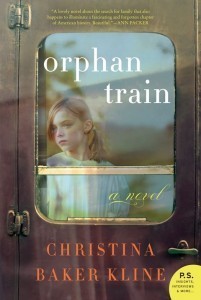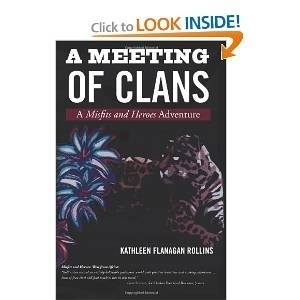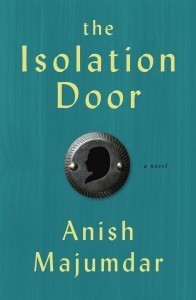Carol Anita Ryan's Blog
December 26, 2022
Hello world!
Welcome to WordPress. This is your first post. Edit or delete it, then start writing!
October 9, 2014
Superior Funerals–A job well done
‘The Thoughts and Happenings of Wilfred Price Purveyor of Superior Funerals’ is the quirky title of a novel which may also become a TV series.
Recently my book group read and discussed the book and it’s a testament to the benefits of being in such a group. When I read the book I was underwhelmed and unimpressed. After hearing the discussion though, I’ve revised my verdict. In my reading the characters were oddly unlikeable. Other readers pointed out interesting things about them, that made me realize I’d short-changed the book. There are lots of things to consider about what happens to the cast of characters living in a Welsh village in the 1920s. In fact this novel makes a good book for discussion.
The writing is top notch. There are many memorable images of the Welch country/seaside. You get a feel for what it would be like living in an isolated part of the world following the Great War. Maybe it is a coincidence, but this novel follows several others we’ve recently read that have a motherless main character. Wilfred becomes more understandable (and for me more sympathetic) when I reflected on that great lack in his upbringing. Even I admit his very unsophisticated but loving dad (or da in the vernacular), was a likable grave-digger, the first I’ve ever known. He was also the best parent he could be.
I love this book and its unassuming story. All you can do is make the best of what you can do–like providing superior funerals.
September 6, 2014
Aboard the Orphan Train
Orphan Train is a novel that’s based on a fact: in the first decades of the 20th Century orphans from New York City were sent by train to farming communities in the midwest where they could be acquired by adults who merely promised to look after them. In the good old days there were no background checks and often the child found him or herself in slave-like conditions. There was no such thing as protection for any child, let alone an orphan.
The novel provides a fictional story of a young girl in the 1930s based on the orphan train fact.
In addition a contemporary story about a foster teen weaves through the book until the two stories collide. By the time the two heroines meet in the present, one is very old and very rich and respectable. The reader learns about the two characters as the two come to know and appreciate each other. It’s a rich and well-told story and except for one unbelievable plot point, I thoroughly enjoyed the book.
August 16, 2014
Look Behind The Cockpit Door
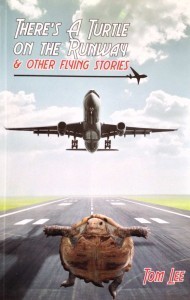 There Is A Turtle On The Runway & Other Flying Stories is a good choice for a lighthearted escape. Tom Lee has written an amusing batch of stories about his life: from his unconventional quest to become a professional pilot, to hilarious adventures once he attains that lofty goal.
There Is A Turtle On The Runway & Other Flying Stories is a good choice for a lighthearted escape. Tom Lee has written an amusing batch of stories about his life: from his unconventional quest to become a professional pilot, to hilarious adventures once he attains that lofty goal.
He doesn’t loose his self-depreciating humor along the way. His prose is easy to read and the stories are just the right length–you can pick up the book in idle moments for a satisfying break. You’ll never view pilots quite the same after reading this book.
August 8, 2014
Spider Woman’s Daughter
In Spider Woman’s Daughter, Anne Hillerman, takes up where her famous father, Tony, left off. When Tony Hillerman died, many of us mourned his passing as well as the end of his mystery novels set around Native American land in the southwest. He had created unforgettable characters in an exotic and fascinating locale. His books were entertaining but enlightening. You could enjoy them and not feel guilty about only reading a murder mystery.
But, all was not lost on the literary front. His daughter has written a mystery novel with the same locale and cast of characters (although wisely focusing on the young wife, also a detective, of Jim Chee).
It must have been daunting to take up the challenge. Could she walk the tightrope between using her father’s format and creating a new work to satisfy his fans? In many ways this seems like a most difficult book to write. Expectations would be sky-high. Could she capture the feel of the southwest setting as convincingly as her dad? She did. One tiny detail, Bernie notices plastic bags stuck on a fence.
I have some minor reservations. She sticks to a present tense narrative when it would be less restrictive and easier to follow using something else when it’s logical to do so. Sometimes, if you carefully read the stream-of-conscious dialog it makes no sense. Usually the reader is so involved in the fast moving plot that these glitches are overlooked.
The big picture is more positive. Anne Hillerman has done a stunning job of writing a Hillerman mystery and she’s done it by making the lead detective a young female Navajo cop. We learn what a young Navajo wife, sister, daughter are like in ways Tony could only guess at. There will never be another Tony, but Anne is off to a great start as a mystery writer.
August 2, 2014
A Meeting Of Clans–in the new world 14000 years ago
Sometimes it’s the misfits who are the heroes.
Kathleen Flanagan Rollins has hit upon this important benefit to the human race in her series of books. The latest, A Meeting Of Clans: A Misfits and Heroes Adventure tells a story, richly researched in what is known about life in southern Mexico 14000 years ago. She makes a small group of people come alive by supplying stories, poetry, drawings, dreams, and crafts, not to mention personalities, to characters living 14000 years ago
When I say come alive, I mean really well-drawn characters facing a wide range of adventures and personality challenges. Seldom have I come across a character as rich and complex as Sula, for example. She was once the foremost beauty in her world. But she suffered a disfiguring injury. She mourns the loss of her previous beauty and power. She becomes a warrior, but then, just when it seems happiness is hers again, vanity almost destroys her. What a story! And Sula is just one of the characters.
It’s hard to set off for the unknown and try new things. Sometimes the ability to be objective, non empathetic, and perhaps a bit mad are just the qualities adventurers and explorers need to survive.
A Meeting Of Clans is the third book in the series. The first book details life in Africa circa 14000 years ago as a group finds its way west across the Atlantic to Central America. Past The Last Island has another group crossing the Pacific to the west coast of Central America. The group who survived the Pacific crossing are now exploring the new world in A Meeting Of Clans.
Rollins has created a series of books both imaginative and entertaining. As part of the adventure, the reader gets to vicariously live as a misfit and hero, or maybe a psychopath
While studying the brain scans of serial killers, the research scientist doing the study discovered his own brain scan fit the criteria for a psychopath. Only a psychopath would be untroubled by that!
Even the writer interviewing the research scientist was alarmed to be in the same room with a psychopath.
http://www.smithsonianmag.com/science...
Why are some people born with a brain configuration that we’ve discovered leads to lack of empathy? Wouldn’t that characteristic make living with others too dangerous (to others)? The lack of development of this empathetic part of the brain seems to be genetic. So, there must be a evolutionary survival benefit to this trait that outweighs the costs to human groups. Rollins may be onto something.
July 17, 2014
The Unlikely Pilgrimage
Taking a long walk often helps clear the mind. Lots of cultures formalize this by suggesting a pilgrimage–walking with an (often religious) quest in view. Literature since ‘The Canterbury Tales’ has exploited the long walk as a framework for a good story.
Rachel Joyce has done this in her beautifully written novel ‘The Unlikely Pilgrimage of Harold Fry’. The main character, a retired English everyman, heads for the mailbox one morning and doesn’t look back– for months and hundreds of miles.
He’s unprepared, he’s out-of-shape, his motives are unclear. As he walks through rural England, Harold (it is not a religious quest) slowly discovers answers to previously unasked questions. At times his quest is made public and popular, although the public understanding is all wrong. A group of followers with their own stories gets added to the plot for a while.
Nothing was predictable about the story. It was full of genuine revelations.
The pace is slow, but the writing is fresh and inventive. Sometimes I doubted the walking pace–anyone, even in tennis shoes should cover more miles/day than Harold managed–especially after the first days’ blisters were overcome. Along with the walking speed, some readers may find the book’s pace a bit lethargic. But, considering the revelations and transformations that take place, a long slow walk was just what was needed.
July 7, 2014
50 years after Cuckoo, a new voice on mental illness
‘The Isolation Door’ combines a coming of age story with a harrowing glimpse at life for the family of a schizophrenic. As you might guess, even the coming of age/love story gets subsumed by the tragic messiness of mental illness. The novel is well-plotted and the writing is white-hot good.
The author pokes at the mental health bureaucracy (‘One Flew Over the Cuckoo’s Nest’ is fifty years old, can so little have changed?). At first I thought the setting must be some backwoods part of eastern Canada, because in the age of lawsuits, I couldn’t imagine a mental health facility in the U.S. operating like the one portrayed. Throughout the book I thought there were subtle Canadian references, but then, later in the story New York State was explicitly mentioned.
The main character has been wounded by having his lovely Bengali-American mother fall into madness during his childhood. The book shows some of the extra cultural challenges of being a hyphenated American in that situation. For example, he is passive at every turn. When he does engage with the outside world, he picks an oddly troubled pack.
Few of the characters were attractive to me. Maybe it’s a generational thing–that is: I’m too old. Since the writing itself is very good, I’d like to see more by the author! Perhaps younger readers will relate more to this story.
June 27, 2014
Brilliant non-horror King novel
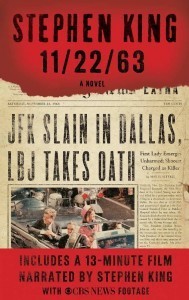
11-22-63
For decades I resisted reading Stephen King because he was known as a horror writer and because my contrarian streak noticed everyone else was a fan. Then, I read some of his comments on current events and decided he had a more interesting mind than I’d imagined. I recently read 11-22-63 because it wasn’t a horror novel and it had gotten good reviews.
It was so hard to put down! In the beginning I questioned if I’d even bought the right book (maybe the Kindle edition got mixed up?), but no matter; it was seductive enough to draw me in as a book about a contemporary high school English teacher.
The book also gave an unflinching look at 1958-1963 America. I have childhood memories of that era. King reminds us what those ‘good old days’ were really like. Yes there were fewer people, which allowed more of certain freedoms (especially for white males), but also more cigarette smoke, intolerance and injustice. I happened to be a kid on vacation at Sebago Lake at that exact time. King got those details–and many others I experienced– exactly right.
A love story runs through the novel which adds a richness to the comparisons of how people live then and now. Lee Harvey Oswald is stalked by the contemporary time traveler, allowing for a nuanced look into the Oswald family prior to the assassination. It’s a clever way to enrich the readers knowledge of the mysterious villain.
As entertainment, as commentary on past and present, and as a history refresher, this novel excels and enchants.
June 14, 2014
Time travel to the 1930s
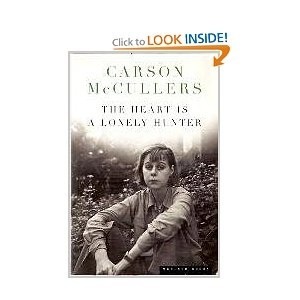 This novel published in 1940, gives a clear-eyed picture of life in the rural south during the Great Depression. The next time you hear some politician extolling the merits of tossing safety nets like social security out, read this book to inform yourself about what life was like in those ‘good old days’ before ‘big government.’ As other reviewers have noted, the characters are depressed and depressing. You can sense the author’s feeling of isolation, if not hopelessness. Reading the book today, you can feel better about how far we as a society have come. It is a bit scary to consider how easily we can fall backwards, though. It is a well- written, thought-provoking book.
This novel published in 1940, gives a clear-eyed picture of life in the rural south during the Great Depression. The next time you hear some politician extolling the merits of tossing safety nets like social security out, read this book to inform yourself about what life was like in those ‘good old days’ before ‘big government.’ As other reviewers have noted, the characters are depressed and depressing. You can sense the author’s feeling of isolation, if not hopelessness. Reading the book today, you can feel better about how far we as a society have come. It is a bit scary to consider how easily we can fall backwards, though. It is a well- written, thought-provoking book.


